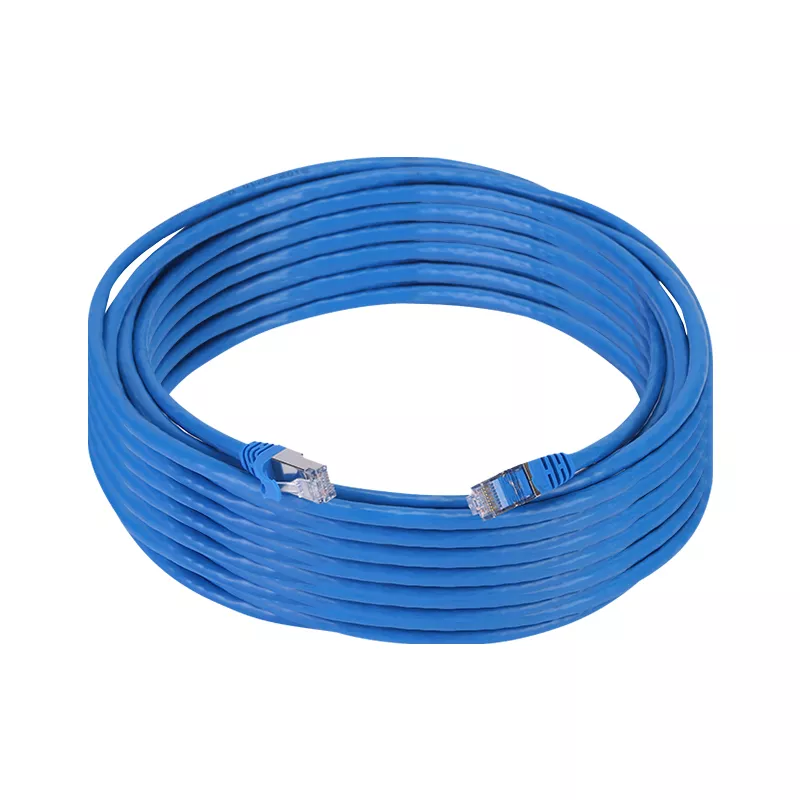
Cat6a Ethernet Cables – Have a bright future
Views: 10 Author: Site Editor Publish Time: 2021-11-26 Origin: Site
Cat6a Ethernet Cables – Have a bright future
As we all know, the Cat6a network cable, which was born more than ten years ago, is considered the most excellent twisted pair cable, which can support a transmission rate of up to 10G. You may be surprised to find that on a global scale, the sales of Category 6/Cat6a ethernet cables still dominate the copper twisted pair market. However, although the sales trend of the Super Category 5 network cable, which was born 20 years ago, has declined, it still occupies a significant market share.
However, when considering cabling standards, PoE and emerging technologies, it is increasingly difficult to find reasons to install and test cables below Cat6a ethernet cables. Now, with the increase in the number of wireless LAN users and the trend of surpassing the number of wired LAN users, and the gradual popularity of the new frequency band Wi-Fi with a transmission rate that is expected to be close to 10G, the Cat6a network cable may usher in its own spring. .
If you check the latest cabling standards, you won’t find any recommendations for cat5e or Cat6 cables. In fact, all current TIA standards recommend the use of Category 6 cables in the installation of new facilities-including TIA-568 (commercial building) general wiring standards, TIA-4966 (educational facilities), TIA-1179 (medical institutions), TIA -862-B (intelligent building) and so on. The same is true for the latest ISO/IEC standards. In other words, if your customers follow these standards, they should install Category 6 cables in any new projects. If they still use Cate6 cables, it may be necessary to remind them.
In addition to the existing wiring standards, the HDBaseT standard for twisted-pair copper cables, which is extremely influential in the field of audio and video transmission, also recommends the use of Cat6 network cables as the transmission medium, which can achieve a maximum transmission distance of 100 meters. But for the Super 5 and 6 network cables, the maximum transmission distance is only 10 meters and 40 meters respectively.
PoE can get better support
In addition to the higher PoE power of Category 3 or Category 4, and the application of PoE power supply equipment such as surveillance cameras and wireless access points gradually surpassing traditional DC power supply equipment, there is another reason for the deployment of Category 6 network cables.
Recently, we have been discussing the heat dissipation problem of PoE harnesses, and the larger wire gauge size makes the heat dissipation capacity of the cat6a network cable better than the Super 5 and 6 network cables. The “TSB-184-A Balanced Twisted Pair Cabling Support Power Output Guide”, which is integrated into the latest TIA 568.2-D standard, stipulates that for a PoE system with a power of 100 watts, the temperature rise needs to be controlled at no more than 15 degrees Celsius. Therefore, in order to ensure that the temperature control requirements of the wiring system can be met, the standard stipulates that the number of Cat6a unshielded twisted pairs allowed in the wiring harness exceeds 25% of the 6 twisted pair, and 70% more than the super 5 twisted pair. .
New band Wi-Fi needs it
With the promulgation of the IEEE 802.11ac standard for ultra-high throughput Wi-Fi in 2013, TIA’s “TSB-162-A Wireless Access Point Communication Cable Guide” also recommends the use of Category 6 cables to set up wireless LANs. Although 2.5/5GBASE-T is mainly designed to enable systems based on Category 5 and Category 6 network cables to support Wi-Fi 5 (provided that it can pass the test), Wi-Fi 6 is a completely different situation.
The IEEE 802.11ax (Wi-Fi 6) standard approved this year brings 4 times the average throughput of Wi-Fi 5, and aims to double the spatial stream of Wi-Fi 5 through the use of link aggregation and finally Provides a network connection speed of nearly 10G per second. The only way to support link aggregation and fully tap the throughput potential of Wi-Fi 6 is to deploy two Category 6 network cable links at each access point.
Cat6a ethernet cable-to meet the needs of the future
Why 6 types of network cables still dominate the market. Part of the reason we heard is that because its outer diameter is smaller, it is easier to install, and the price is cheaper from the material point of view, and we don’t need such a high transmission speed as 10G.
However, in the era of the Internet of Things, with the increasing coverage of the system and the demand for higher transmission rates, more users begin to use wireless networks, and more devices provide power through PoE. At the same time, there is a growing demand for Category 6 network cables. The amount will continue to reduce its cost. Not choosing a Category 6 network cable will sooner or later put customers at the risk of having to replace Category 5 or Category 6 network cables. In the long run, this will bring higher costs.
Although there are so many reasons for us not to choose Super 5 and 6 cables, you may still meet users who insist on deploying these two types of cables. However, we believe that the cat6a network cable has a bright future.


